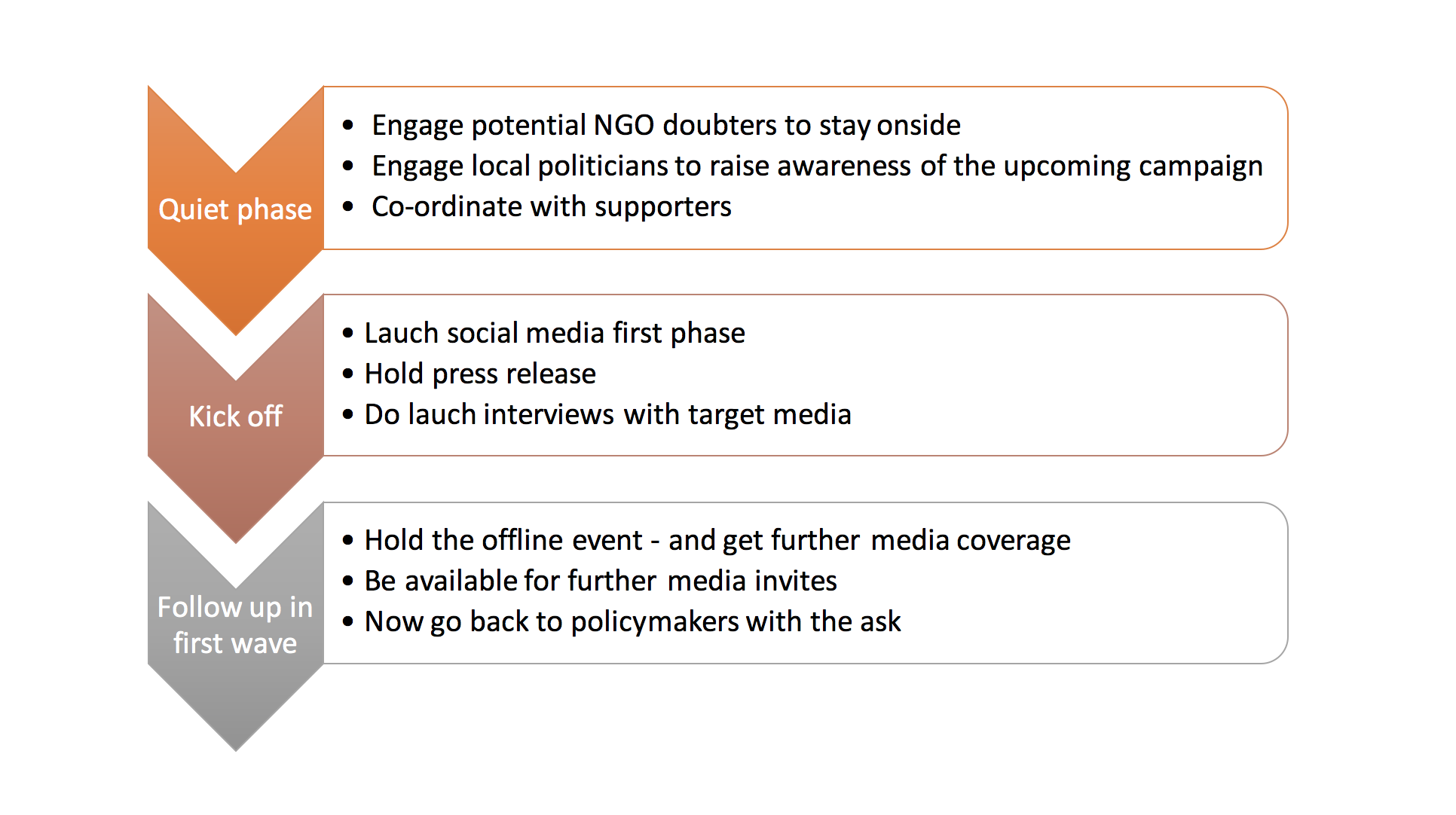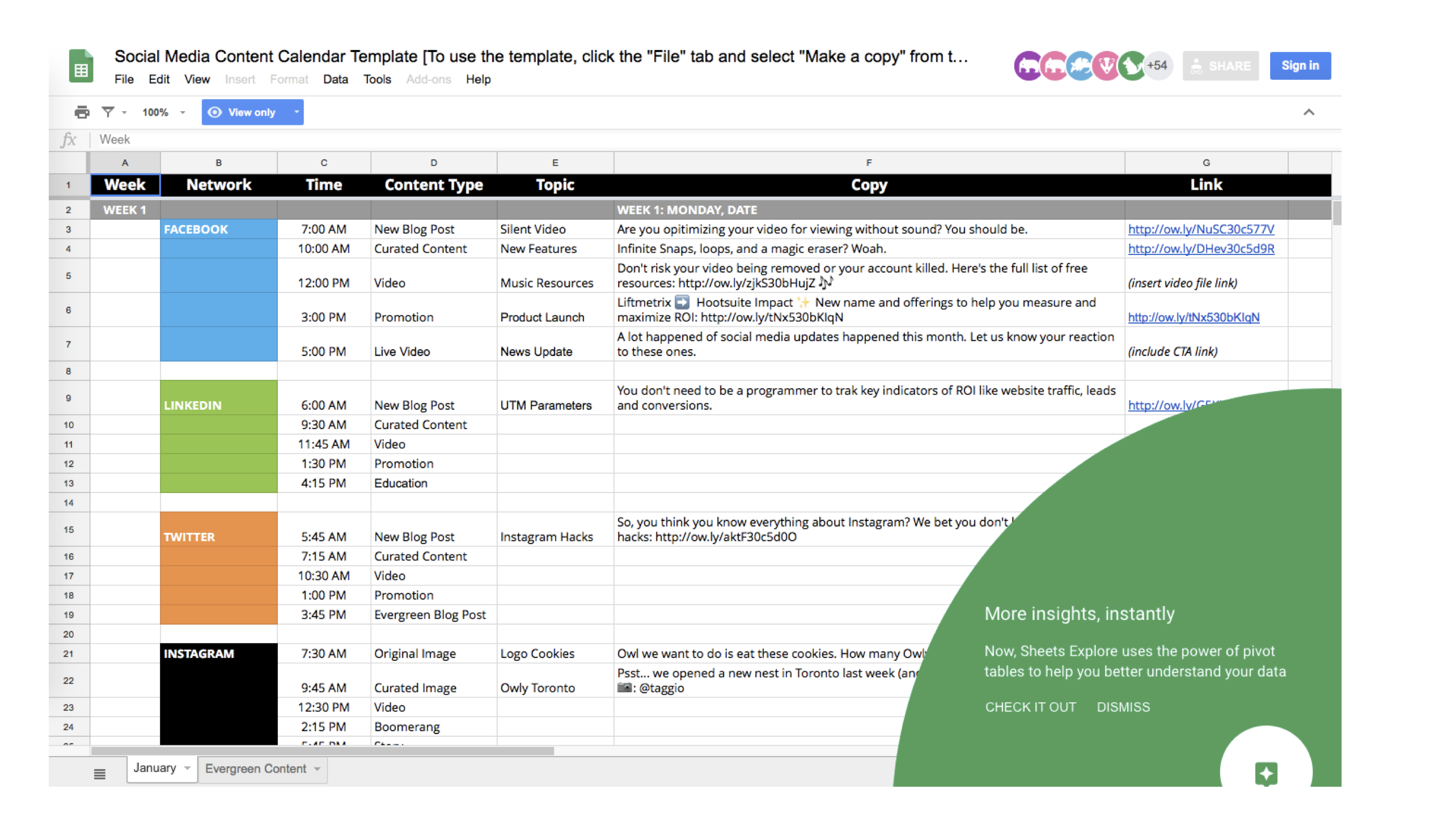4.1 Sequence the campaign phases
The 4th step of the narrative change planning process – Run the campaign - consists of four elements and on this page, we focus on the first: Sequence the campaign phases.
-
Sequence the campaign phases
-
Get your ducks in a row & start
-
Monitor as you go
-
Prepare to defend your position
In the second step of the planning process, the focus was on fleshing out the elements of the plan and developing the set of activities and communication tools needed to achieve your aims. Now we get down to the specifics to how you will group these elements and in what order you will choose to roll out the various parts of the campaign effort. Put more simply, this element focuses on how you will sequence your campaign.
Make detailed plans of the elements needed for each wave of the campaign.
This planning process is often based around an idea of waves of the campaign, i.e. dividing out the stages in the campaign to achieve a sequenced set of objectives through more intensive/louder as well as quieter periods. For example, as shown in the diagram below, you might have a quiet phase to build support, then launch to get media attention, followed by holding a public event to keep the momentum going and finally building up to going to policymakers with a more specific ask. These three stages combined may be considered the first wave of a campaign.

Figure 1: Sample wave of a narrative change campaign
There is no simple formula or checklist for all campaigns in this regard; it is a question of considering what your steps will be through the campaign to build momentum, achieve a set of feasible and sequenced objectives and grouping the activities involved in the most effective manner around these stages or waves. The event or debate you are trying to connect to in your campaign (as identified in step 1 of the planning process) can also be a significant driver of this planning. An example of this type of strategic timing of campaign activities and tools is detailed in the case box below:
British Future built their campaign around the centenary celebrations of World War 1 in 2014 and especially around Remembrance Day of that year (November 11th), when people wear the poppy in the UK. Actually, many people wear poppies from October 31st up to November 11th and so, their press release and campaign launch letter in the newspapers appeared on October 30th and many of the media focused activities were conducted in that period when people (especially those on TV) are wearing the poppy.
Ultimately, this is a strategic scheduling exercise, and so must involve in-depth planning of all activities and when associated communication tools for the campaign get released. Hootsuite provides a useful example of how social media campaigns can be scheduled and this is the level of detail that is needed in your broader scale plan for the roll out.

Figure 2: Example of a social media campaign plan
In fact, you could build out this template and include your other non-social media actions in the first or following waves. The template is available to work with online.
STEP 4.1 - Sequence the campaign phases
-
What are your step-by-step objectives in the campaign? Break down how you will proceed to get to the final goal.
-
Which objectives can be achieved in the opening/first wave of the campaign? Do you also need subsequent waves to get to your goal?
-
What groups of activities and communication tools are needed to achieve your objectives in the first wave? And for any subsequent waves?
-
How are you connecting the campaign waves to the debate or event that is your focus in the campaign?
-
What will be the order in rolling out the first wave? Schedule and sequence your events, release of communication tools, meetings, media etc.